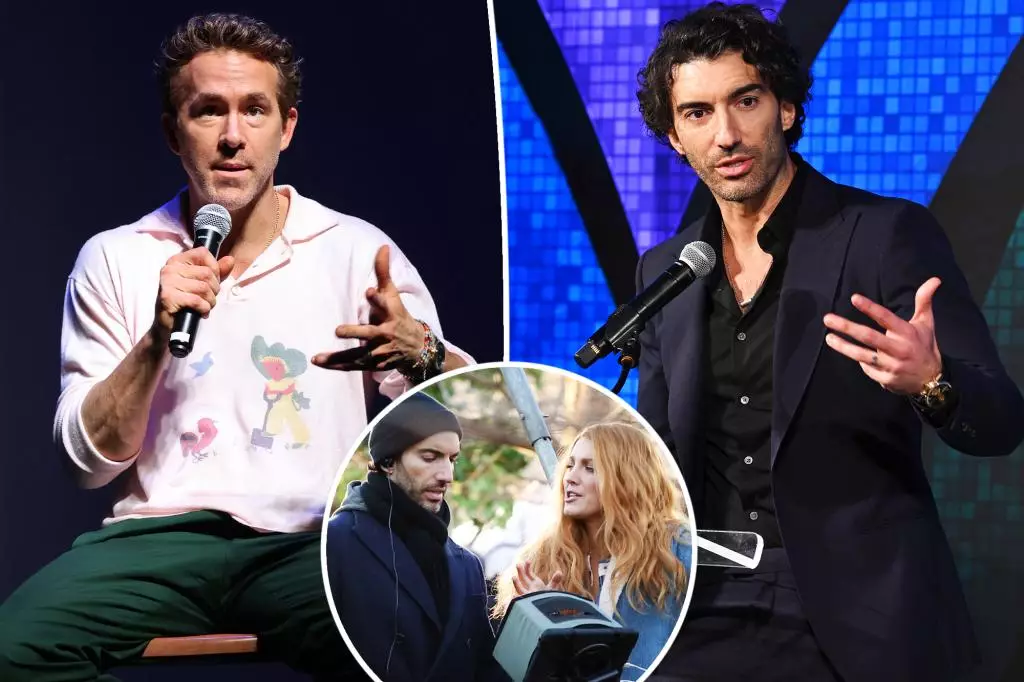In a world where social media interactions can spotlight or shun, the recent revelation of actor Ryan Reynolds blocking Justin Baldoni on Instagram has sparked significant speculation. Months before actress Blake Lively filed formal allegations against Baldoni for sexual harassment, Reynolds’ actions hinted at broader tensions surrounding the film “It Ends With Us.” The reported timeline of events reveals deeper layers to the interactions among these Hollywood personalities, illustrating how seemingly trivial digital gestures can unveil profound underlying issues.
This blocking incident, which Baldoni discovered in May, raises essential questions about personal dynamics in a tightly-knit industry where comfort and respect should prevail. The message exchanges unearthed by Page Six reveal Baldoni’s anxiety that Lively might also choose to distance herself from him. He expressed this concern in texts with his publicist, articulating a desire for a contingency plan if Lively chose to follow Reynolds’ example. This microcosm of stress suggests an awareness of a volatile atmosphere surrounding the film’s production and the relationships entailed.
Allegations Take Center Stage
As the public began digesting these social media narratives, Lively’s sexual harassment complaint emerged, further complicating the situation. What had begun as mere speculation of discontent transformed into serious allegations that became a focal point for discussion regarding the ethical behaviors in film production environments. Lively’s accusations highlight troubling conduct purportedly exhibited by Baldoni—his co-star and director in the film, “It Ends With Us.”
Based on Lively’s account, Baldoni’s alleged disruptive behavior was not limited to inappropriate conversations but extended to objectifying imagery and personal inquiries that she found deeply intrusive. The moment Lively decided to call for an “all-hands” meeting indicates the extent to which she felt her boundaries were being compromised during filming. Such measures are often seen as last resorts where preventative measures fail and workplace respect that ought to be an intrinsic value disintegrates.
In the wake of Lively’s complaints, Baldoni and his legal representation categorically refuted the allegations, labeling them “categorically false” and claiming that they bore elements of intentional salaciousness aimed at impacting Baldoni’s reputation. This knee-jerk reaction reflects how damaging accusations can lead to swift and sometimes disproportionate responses from those implicated. In an industry where image is paramount, such defenses are likely preempted by fears of public backlash and litigation outcomes.
Moreover, the narrative set forth by Baldoni’s attorney hints at a more complicated backstory, weaving in claims that Lively made several demands during production, including potential threats not to participate if these demands weren’t met. This formulation of events reveals a classic confrontational dynamic prevalent in the high-stakes environment of filmmaking, where creative differences entwined with personal grievances can generate a toxic atmosphere. This duality underscores the pressures not only actors but all behind-the-scenes personnel endure.
Lively, with public assertions aimed at illuminating retaliatory tactics in the film industry, emboldens dialogues about conduct and accountability. Her hope that this legal action will foster change resonates with a growing movement aimed at protecting individuals who speak out against misconduct. In doing so, it creates a powerful narrative shift, one that embraces truth-telling and challenges established norms in professional settings.
As the complexities surrounding this situation unveil themselves, they reflect not only on the personal lives of those involved but also on the broader cultural framework within Hollywood. The entertainment industry grapples with the urgency of ensuring safe work environments free from harassment and misconduct, aligning professional conduct with ethical accountability. Thus, while the Reynolds-Baldoni-Lively saga plays out in public, it carries with it critical reflections about power dynamics, respect, and the importance of safeguarding integrity in creative spaces.

